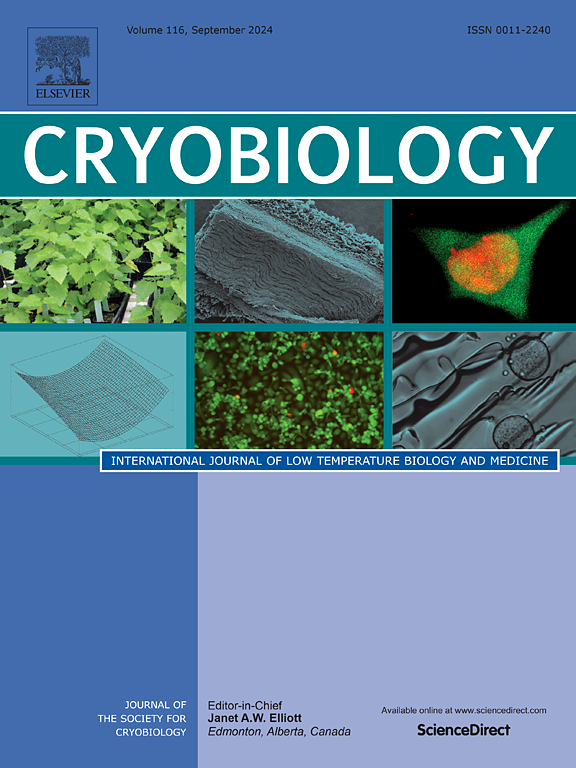内质网-线粒体相互作用在达斡尔地松鼠冬眠骨骼肌纤维钙稳态维持中的作用研究。
IF 2.1
3区 生物学
Q2 BIOLOGY
引用次数: 0
摘要
在冬眠-觉醒周期中维持细胞质Ca2+稳态的能力是使冬眠动物在冬眠期间抵抗废用诱导的肌肉萎缩的关键策略。然而,er -线粒体相互作用是否有助于冬眠期间骨骼肌纤维胞质Ca2+稳态的调节仍不清楚。在这里,我们系统地探讨了达斡尔地松鼠(达斡尔鼠)冬眠期间比目鱼肌(SOL)和指长伸肌(EDL) er -线粒体接触位点(ERMCS)内系栓蛋白、Ca2+轴相关蛋白和参与Ca2+运输的蛋白复合物的表达。结果表明,与晚睡(LT)组相比,在回合间唤醒(IBA)组中,SOL肌肉中栓系蛋白MFN2和Ca2+轴相关蛋白GRP75和VDAC1的表达显著增加,Ca2+轴复合物内的相互作用增强。此外,在冬眠-觉醒周期中,这些相同的指标在EDL肌中没有显着变化。这些发现表明,er -线粒体的相互作用可能参与维持骨骼肌在冬眠-觉醒周期中的Ca2+稳态,特别是在慢抽搐肌中。本文章由计算机程序翻译,如有差异,请以英文原文为准。
Research on the role of endoplasmic reticulum-mitochondria interactions in maintaining calcium homeostasis in skeletal muscle fibers of hibernating Daurian ground squirrels
The ability to maintain cytoplasmic Ca2+ homeostasis during the torpor-arousal cycle is a crucial strategy that enables hibernators to resist disuse-induced muscle atrophy during hibernation. However, whether ER-mitochondria interactions contribute to the regulation of cytoplasmic Ca2+ homeostasis in skeletal muscle fibers during hibernation remain unclear. Here, we systematically explored the expression of tethering proteins, Ca2+ axis-related proteins, and protein complexes involved in Ca2+ transport within the ER-mitochondria contact sites (ERMCS) of soleus (SOL) and extensor digitorum longus (EDL) muscles in Daurian ground squirrels (Spermophilus dauricus) during hibernation. Results demonstrated a significant increase in the expression of the tethering protein MFN2 and Ca2+ axis-related proteins GRP75 and VDAC1, as well as enhanced interactions within the Ca2+ axis complex in the SOL muscle in the inter-bout arousal (IBA) group, as compared to the late torpor (LT) group. In addition, these same indicators exhibited no significant alternation in the EDL muscle during the torpor-arousal cycle. These findings suggest that ER-mitochondria interactions may participate in maintaining Ca2+ homeostasis in the skeletal muscles during the torpor-arousal cycle, especially in slow-twitch muscle.
求助全文
通过发布文献求助,成功后即可免费获取论文全文。
去求助
来源期刊

Cryobiology
生物-生理学
CiteScore
5.40
自引率
7.40%
发文量
71
审稿时长
56 days
期刊介绍:
Cryobiology: International Journal of Low Temperature Biology and Medicine publishes research articles on all aspects of low temperature biology and medicine.
Research Areas include:
• Cryoprotective additives and their pharmacological actions
• Cryosurgery
• Freeze-drying
• Freezing
• Frost hardiness in plants
• Hibernation
• Hypothermia
• Medical applications of reduced temperature
• Perfusion of organs
• All pertinent methodologies
Cryobiology is the official journal of the Society for Cryobiology.
 求助内容:
求助内容: 应助结果提醒方式:
应助结果提醒方式:


